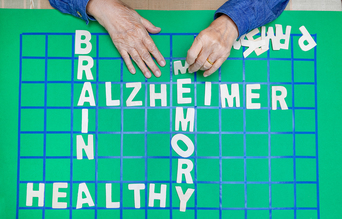Dr Philip Koh went LIVE on-air with Capital 95.8 FM, 乐活新世代 program! He shared with the listeners on the topic of common gastrointestinal problems, especially during Chinese New Year.
Listen to the interview:
Dr Philip Koh went LIVE on-air with Capital 95.8 FM, 乐活新世代 program! He shared with the listeners on the topic of common gastrointestinal problems, especially during Chinese New Year.
Listen to the interview:
Flu Outbreak Hits Asia. Doctors are seeing more patients with upper respiratory infection for the past 3-4 weeks. The recent cold spell could be the reason. Dr Philip Koh shared his insights on this outbreak in the news. Watch the video in the link below.
https://www.channel8news.sg/news8/singapore/20180202-sg-flu/3950400.html
To appreciate the continuous support of our corporate clients for Healthway over the years, we put together an exclusive screening of ‘Spider-Man: Homecoming’ on a weekday night at Golden Village Suntec City. The turnout was impressive as we hosted approximately 200 pax at the event. All attendees also enjoyed treats of popcorn and drinks to complete their cinematic experience!
View more photos here!


What is Urinary Incontinence?
Urinary incontinence is the inability to control the bladder or prevent urine from leaking. Fortunately, this common and embarrassing problem is treatable. Often, urinary incontinence is a result of the weakening of the pelvic floor muscle.
What is the pelvic floor muscle?
The pelvic floor muscle is shaped like a hammock at the bottom of our pelvic bone. Its functions include:
What weakens the pelvic floor muscle?
Commonly, the pelvic floor muscle is stretched and weakened during pregnancy by the weight of the baby. This affects the tone of the urethral sphincter, the muscle which controls the retention and release of urine from the bladder. Multiple pregnancies can further weaken this muscle.
Patients with prostate cancer or benign prostatic hyperplasia (a non-cancerous enlargement of the prostate) may undergo surgery to remove the gland. The operation may subject them to the risk of damage in the genital nerve or urethra, which in turn can weaken this muscle.
Other Causes of Urinary Incontinence
Types of Urinary Incontinence
1. Stress Urinary Incontinence
Stress urinary incontinence occurs when there is physical exertion that increases the intra-abdominal pressure and stresses the pelvic floor muscles. It is the most common type of incontinence. Urine leakage can be triggered by:
How can Stress Urinary Incontinence be treated?
A digital examination via the rectum or vagina can be used to assess the strength of the pelvic floor muscle. There are non-surgical and surgical treatment options for this condition.
Non-Surgical Treatments for Stress Urinary Incontinence
This is carried out by a physiotherapist as the first line of treatment. Electrical stimulation and biofeedback are often used while doing Kegel exercise to enhance the effectiveness of this strengthening exercise.
A pessary is a removable device that is inserted into the vagina to support the pelvic organs. This is effective for mild prolapse, which eases the pressure on the pelvic floor muscle.
Constipation may aggravate urinary incontinence. Eating more high-fibre foods and drinking lots of fluids will help to soften stools.
Regular exercise helps to improve a person’s mobility and fitness, especially in the elderly. This may enable them to reach the toilet before wetting themselves. Moving around regularly will also help with bowel movement and reduce constipation.
Urosheath is a latex or silicone tubing placed over the penis to help facilitate the drainage of urine. It is not a treatment to improve urinary incontinence but an alternative to incontinence pad.
Surgical Treatments for Stress Urinary Incontinence
A minimally invasive surgery that is performed by a Urologist to provide support to the bladder neck in women. This may be considered when all non-surgical options have failed.
A surgery that relocates the urethra in order to maintain appropriate tension over the urethra and avoid recurrent leakages and urine retention.
An implant that is surgically placed around the urethra to treat more severe cases of male stress urinary incontinence. It compresses on the urethra and restricts the flow of urine out of the bladder.
2. Urge Urinary Incontinence (Overactive Bladder)
The condition, also known as an overactive bladder, happens when the bladder contracts involuntarily, causing urine to leak through the urethral sphincter, which holds the bladder closed. It may be caused by infection, neurologic disorder or diabetes.
Signs and symptoms:
The urge can be triggered by the sound of water dripping or flowing, or when seeing the toilet.
How can Urge Urinary Incontinence or Overactive Bladder be treated?
It is usually diagnosed with a urodynamic test which checks how well the bladder and urethral sphincter store and release urine. It can be treated in the following ways:
3. Mixed Urinary Incontinence
Generally, patients will need absorbent pads and adult diapers to avoid urine accidents, skin irritation and to block odour. Urinary incontinence can hamper daily activities and may pose some physical, social and emotional challenges for the sufferers. Other consequences include the likelihood of one slipping into depression, isolation and low self-esteem.
However, for most patients, simple lifestyle changes or medical treatment can stop the discomfort or embarrassment.
You need not feel disheartened or suffer in silence. Urinary incontinence is a common problem, and there is a range of treatment options. Your doctor and physiotherapist can develop a suitable treatment plan based on your diagnosis. Seeking early treatment can help you lead a more active and fulfilling life.

Ms Vernetta Wong
Physiotherapist, PhysioAdvance
Click here to locate us!
Click here to learn more about Physiotherapy!
Click here to book an appointment now!
Ms Vernetta Wong is a musculoskeletal physiotherapist and lymphoedema therapist at Physio Advance, a member of Healthway Medical Group.

Dementia is a general term to describe a decline in mental capacity that is severe enough to interfere with daily life. The brain cells of people with dementia die at a faster than normal, leading them to lose their ability to remember, think and reason.
A Rising Health Issue
A Well-Being of the Singapore Elderly (WiSE) study conducted in 2013 found that, in 2012, 10% of the elderly population or 28,000 people aged 60 years and above had dementia. This study was spearheaded by the Institute of Mental Health, Singapore.
Main Type of Dementia
Alzheimer’s dementia is the most common type of dementia and accounts for about 60% of all cases. This type of dementia causes progressive loss of brain cells with the formation of insoluble proteins in and around the brain cells. The onset of this condition is gradual, and early symptoms may be missed.
As the condition advances, people with dementia may demonstrate personality and behavioural changes which impede their daily life activities. While the likelihood of having dementia increases with age, it is not a condition related to normal ageing.
Other Types of Dementia
There are also other forms of dementia, including Vascular dementia, Lewy body dementia and Parkinson’s disease dementia.
Vascular dementia is the second most common type of dementia. It is a result of impaired blood flow to the brain, often after a stroke or series of strokes.
Three Stages of Alzheimer’s Dementia
It is not always easy to recognise the symptoms of Alzheimer’s dementia as they can be confused with normal ageing. For instance, it is normal to forget where one has placed his or her keys, but if the poor memory is associated with dementia, it will persist and worsen over time.
Dr Seng Kok Han advises that medical consultation should be sought if one displays the following signs and symptoms:
Early Stage: Mild Alzheimer’s Disease
At the early stage of Alzheimer’s, a person can still function independently and carry on with day-to-day activities. However, performing complex activities will be impaired.
Middle Stage: Moderate Alzheimer’s Disease
A greater level of care and attention has to be given at this stage.
Late Stage: Severe Alzheimer’s Disease
At the final stage of the disease, patients are totally dependent on others for basic activities such as dressing, bathing, toileting and eating.
Assessment
Assessment of dementia involves detailed medical record-keeping, physical examination, cognitive testing, blood investigations, and brain imaging.
Benefits of Early Intervention
Although there is no cure for Alzheimer’s dementia, early diagnosis enables patients and caregivers to have a better understanding of their condition and receive anticipatory guidance for emerging symptoms. They can also plan for the future, such as making a Will and Lasting Power of Attorney (LPA) while they still have the mental capacity. Early intervention can slow down the progression of cognitive decline, prolong patients’ ability to carry out their daily activities and delay the need to place the patient in institutional care.
Preventive Measures to Slow Down the Deterioration of Brain Cells
Comprehensive Care to Manage Dementia Patients
Dr Seng Kok Han outlines the following approaches in which doctors, family members, caregivers and the community all play a part in helping patients with dementia cope with the illness.
Medication
Prescribed medications such as Donepezil, Rivastigmine, Galantamine or Memantine can slow down the progression of the illness. Antidepressants can be used to treat depression while antipsychotics can help manage hallucinations and paranoia, which can be seen in dementia.
Psychological Support
Psychological approaches include helping to orientate patients (reality orientation) and to help them focus on meaningful activities of the past (reminiscence therapy). Cognitive training can equip them with skills to decrease everyday problems and improve the quality life. Behavioural modifications are applied to help patients change specific challenging behaviours.
Social Interventions
It is important to work with family members as they play contributory roles in influencing treatment outcomes and management. Referring patients to appropriate agencies such as daycares, befriender services and family service centres can help in the aftercare.
Dr Seng Kok Han concludes, “Early diagnosis and intervention allows patients with dementia to slow down the progress of cognitive decline and prolong the joy of spending quality time with their loved ones.”
10 Questions to Check Your Memory
Even if you have answered “Yes” to most of the questions, fret not! Early diagnosis and intervention allows patients with dementia to slow down the progress of cognitive decline and prolong the joy of spending quality time with their loved ones. The surest way for an accurate diagnosis is to consult a doctor.

Consultant Psychiatrist, Nobel Psychological Wellness Centre
Click here to locate us!
Click here to book an appointment now!
Dr Seng Kok Han is a Consultant Psychiatrist from Nobel Psychological Wellness Clinic, a member of Healthway Medical Group. Dr Seng is experienced in treating mood disorders such as depression, bipolar disorder and psychotic disorders such as schizophrenia. He also treats insomnia, anxiety, stress-related disorders and dementia.

Hand Foot and Mouth Disease (HFMD) is a highly contagious viral infection which is common in young children. Characterised by ulcers in the mouth and a rash on the hands and feet, it is caused by a group of enteroviruses, commonly known as the Coxsackie virus. These viruses spread through direct person-to-person contact, nasal discharge, saliva, faeces, and fluids from the rash of an infected person.
HFMD mainly affects children below the age of 10 and often those under five. Children at these ages are more susceptible because they have lower immunity and have the tendency to put their hands in their mouths. Caregivers in close contact with a sick child are also at risk of getting infected.
Why is my child at greater risk?
Most parents send their children to infant care centres, childcare centres and preschools where the children play, learn and socialise with their friends. The sharing of common facilities, books and even toys makes them more susceptible to the highly-infectious HFMD. With many children attending such care centres, HFMD can spread quickly. Although HFMD is present throughout the year in Singapore, an annual spike in infections has been observed around the March to May period. Recently, the Ministry of Health reported that there were 1,249 cases of HFMD in the week from 29 July to 4 August 2018. This is worrisome as the number of cases is one and a half times higher that of the same period last year.
What are the symptoms to look out for?
Dr Tan Zhen Han says, “With the prevalence of HFMD, it is advisable for parents, caregivers and teachers to be watchful and examine their children or students daily for the following symptoms:
Symptoms may vary and may appear at different stages of the illness. The incubation period, which is the period between exposure to the virus and the appearance of the first symptoms, is usually three to five days.
What should I do when my child gets HFMD?
Consult a doctor as soon as your child shows HFMD symptoms. While there is no specific treatment for HFMD, your child can be given symptomatic treatment to manage the fever and painful mouth ulcers.
For example:
It is very important that you inform your child’s school or childcare centre immediately and keep the sick child away from public places. You should also exercise good hygiene discipline to protect your family and prevent the virus from spreading.
How do I know if my child has fully recovered?
In most cases, the infection will go away without treatment in seven to 10 days. Only certain types of enteroviruses, like the Enterovirus 71, can cause serious complications that involve the heart and nervous system, and may even result in fatality.
When should I seek immediate medical attention?
Follow-up with your doctor if the symptoms persist or worsen after 7-10 days. More importantly, seek immediate medical attention if your child complains or shows the following signs:
How do I protect my child from HFMD?
Currently, there is no vaccine to prevent HFMD, but you can help to prevent HFMD from spreading by monitoring your children closely and teaching them good hygiene habits such as:
You can be a good role model for your children by practicing these habits . In addition, be diligent in cleaning and disinfecting common areas, toys and appliances thoroughly.

Consultant Paediatrician, SBCC Baby & Child
Click here to locate us!
Click here to book an appointment now!
Dr Tan emphasises, “Parents, teachers and caregivers play a crucial role in detecting infections, containing the spread, and even prevention. Let us start being vigilant and looking out for our children”.
Dr Tan Zhen Han is a Paediatrician from SBCC Baby and Child Clinic, a member of Heathway Medical Group. Dr Tan is trained in Paediatric Medicine, Neonatology, Intensive Care, Children’s Emergency and Paediatric Subspecialties.

Ageing is a fact of life. With the advancement of modern medicine, humans are living longer than ever. The average Singaporean female can be expected to live to the age of 86 years while the average Singaporean male, up to 80 years.
Old age causes a slow and steady deterioration of the body’s defence system – a concept called immunosenescence. This age-induced immunodeficiency causes the elderly adult to be susceptible to invading pathogens. Two common infections that can be prevented via vaccinations are the flu virus and pneumonia bacteria.
Influenza Vaccination
The flu virus can have devastating effects on one’s health – especially in the elderly as they have reduced defences towards the virus. The infection can lead to hospitalisation and even admission to intensive care. It also comes with the risk of death. Due to the heightened stress that the influenza virus puts on the immune system, the elderly are predisposed to various complications of the flu, which include heart attack, stroke and viral lung infection. With the flu virus, the body reacts by assuming a hyper-inflammatory state, which causes blood to clot easily.
It is therefore prudent that we try our best to prevent influenza infections. Vaccines have been proven to be safe and effective in preventing influenza infection. Although the efficacy of the vaccine is decreased in the elderly, it is still better for them to be vaccinated because vaccination can lessen the severity of the effects of the influenza infection.
Due to the highly variable and “face-changing” character of the influenza virus, the vaccine needs to be updated every year. Vaccine companies will choose between the prevalent influenza strains from either the Northern or Southern Hemisphere winter as the vaccine for the year. An annual dose of the vaccine will provide protection against the influenza virus.
Pneumonia Vaccination
Pneumonia is commonly caused by bacteria that infects the lungs, bringing on severe coughing, fever and chest pain. In Singapore, pneumonia is the second leading cause of death, with the elderly and children at high risk. Pneumonia is preventable through vaccinations. It is recommended that all adults above 65 years of age be vaccinated with two kinds of pneumonia vaccines, namely PCV 13 (Prevenar), and PPSV 23 (Pneumovax).
The current national pneumonia vaccination recommendation is one dose of Prevenar 13 at age 65 and above, followed one year later by Pneumovax 23, for adults who have no immunity or who have never been vaccinated. This ensures the most effective protection against pneumonia.
The Importance of Vaccination
Prevention is always better than cure, and disease prevention is always the goal of the family physician. The vaccines are well studied and safe for elderly adults, and the potential side effects – injection site pain, fever or allergic reactions – are minimal.
It is also convenient for the elderly to obtain the vaccine. Adults aged 65 and above can now use Medisave to cover the cost of vaccinations, and both vaccines can be administered at the same time as long as it is on different parts of the body.
Talk to your doctor today to find out more about these vaccinations, and give yourself the best protection against these diseases.

Family Physician, Healthway Medical Group
&

Chairman, Medical Board, Healthway Medical Group
Click here to book an appointment now!

A stroke occurs when the blood supply to and within the brain is interrupted. This deprives the brain cells of oxygen and within minutes they begin to die. A stroke may be caused by either a blocked artery (Ischemic stroke) or the rupturing of a blood vessel (hemorrhagic stroke).
Factors Affecting the Outcome
The location and the severity of the stroke significantly influence the treatment outcomes. The location of the stroke is crucial as different parts of the brain control different functions. A massive or dense stroke usually leads to more brain tissue damage.
Ischemic stroke has better recovery outcome than hemorrhagic stroke. The bleeding in the brain artery during hemorrhagic stroke often leads to more pressure on the brain tissue. The extent of the damage will also determine whether the patient may be left with a mild stroke or a more serious stroke with long-term problems.
5 Post-Stroke Conditions Requiring Physiotherapy
Physiotherapy plays a crucial role in treating the following post-stroke conditions:
When Should Rehabilitation Begin?
Physiotherapy should start as soon as the patient’s condition is stabilized, while in the hospital. Physiotherapists will work with doctors, nurses, speech therapists and occupational therapists to ascertain a patient’s rehabilitation potential. Patients who require a longer rehabilitation period will be referred to a community hospital. After the hospital stay, patients usually continue with periodic outpatient therapy sessions until they regain their functional abilities. The rehabilitation process may take from six months to a year depending on the severity of the patient’s condition.
What does Physiotherapy Rehabilitation Involve?
Post-stroke rehabilitation begins with a series of tests to assess the baseline functioning of patients. These tests are:
1. Basic cognitive test – cognitive test is an important test to determine how instructions will be given to the patient. It may also affect the accuracy of subsequent tests.
2. Range of motions in all limbs
3. Strength
4. Sensation
5. Coordination
6. Balance
7. Functions
These findings are used for goal setting and treatment planning. Short-term and long-term goals are set to motivate patients throughout the rehabilitation period. Caregivers are often also given the training to enable them to assist patients in their daily activities or movements.
Different Treatment Approaches
There are various treatment approaches for motor function recovery.
Physiotherapy is one of the key components in the spectrum of treatment and rehabilitation of stroke survivors. At Physio Advance, we help mild-stroke survivors restore their physical functions and regain their independence. As such, it is important for patients to attend their rehabilitation sessions regularly and practice the prescribed exercise routines at home.

Physiotherapist, PhysioAdvance
Click here to locate us!
Click here to learn more about Psychiatry!
Click here to book an appointment now!
Ms Vernetta Wong is a musculoskeletal physiotherapist and lymphoedema therapist from Physio Advance, a member of Healthway Medical Group.

High Functioning Depression (HFD) is not a new concept in Psychiatry. HFD is also known as Dysthymia or Persistent Depressive Disorder. It is a serious and disabling form of depression that shares many similar symptoms with other types of depressive disorders.
Dysthymia describes the condition inflicting persons who experience persistent low-grade symptoms of depression. As the depressive symptoms of Dysthymia experienced are less severe than Major Depressive Disorder (MDD), for example, sufferers continue to be able to complete the activities necessary to lead a functional life, though barely so at times. Persons with HFD work and often have thriving careers. Outwardly, they take care of their families, their homes and their appearances. But internally, they struggle with feelings of negativity, sadness and despair.
When HFD is complicated by MDD, where the individual experiences severe depressive symptoms of MDD, the condition is known as “double depression”.
As with most depressive disorders, there is no specific clinical test for HFD at the moment. Nevertheless, healthcare professionals, such as primary care doctors and mental health specialists, can use various screening tools of validated scales to evaluate a person’s mood and experiences, to assess the presence of depressive symptoms and their severity.
Based on your experience, how common is HFD in Singapore, assuming there are no official statistics for this?
The Singapore Mental Health Study conducted in 2012 estimates the proportion of the local population that had experienced HFD at some point in their life to be 0.3% This is relatively low compared to MDD, which affects 5.8% of our population.
What might a typical patient with HFD experience or feel?
A typical patient with HFD may feel depressed for most of the day or on most days for a few years. Some examples of such experiences and feelings are as follows:
– Inability to enjoy interests or activities
Things and/or activities, e.g. social gatherings and hobbies, that bring one pleasure before do not excite with the same joy as they used to. Instead of looking forward to participating in them, individuals with HFD find them tiresome and may even seek to avoid them altogether.
– Low self-esteem
When problems are perceived as endless and difficult to overcome, individuals with HFD do not believe they have the resources to cope with them. This is usually a result of low self-esteem and self-criticism. For example, the individual may think that their partner will get angry or will stop loving them if they do not spend enough time with them. Another example is feelings of anxiety and self-doubt if they do not get recognition at work.
– Hopelessness
Those with HFD may engage in multiple activities and often try to keep themselves busy and not waste any time. However, when it comes to feeling happy or building a happy life, they may feel a sense of hopelessness or emptiness. Such feelings may be persistent and can lead to the development of depressive episodes.
– Unable to sleep
While sleep requirements vary from person to person, healthy adults generally need between seven to nine hours of sleep each night to function at their best. However, those with HFD may find it difficult to achieve a regular sleep pattern. Some may sleep less, while others may sleep more.
– Fatigue
Most depressed people may find that they experience fatigue more, regardless of how many hours of sleep they have the night before. Individuals with HFD may continue to work or try to complete their tasks despite feeling extreme fatigue.
– Poor appetite or overeating
Some HFD patients may not feel motivated to take care of their health. They will either lose interest in eating or indulge in too much food.
What are the biggest challenges facing people who have HFD in terms of recognising their problem and taking steps to improve their mental health?
Persons with HFD may have the core belief that, with enough persistence and effort, they can overcome the symptoms they experience. This is due to the relatively lower symptom severity, which allows them to ‘bear with it’ despite the distressing nature. Their ability, while barely so, to maintain a high performance or functional level, may convince them that help is not required.
Some may also choose to maintain a sense of normalcy by distracting themselves with work or compensatory mechanisms e.g. alcohol, cigarettes, drugs, excessive gaming, overindulging in food or binge-watching serials. While these activities may help to alleviate the emotional distress in the short term, they do not help in the longer term and may even complicate circumstances.
Often a person with HFD may not recognise that they are actually depressed or at the brink of their ability to cope until a life event happens, either in their personal or work life. Being aware that they have HFD is therefore crucial. It is a condition that is treatable, very often with the help of the significant other.
How can friends and family of people with HFD identify HFD symptoms?
Depression does not mean that patients are visibly sad. In most HFD cases, sufferers can hide their feelings and still go about their daily activities. Other than noticing glimpses of sadness or suggestions that the person may not be as enthusiastic about their interests/hobbies as they used to, you should be alert if your loved one is also:
– Eating less, or a lot more than usual, or skipping meals
– Experiencing erratic sleep patterns or constantly tired
– Expressing thoughts of hopelessness, meaninglessness or emptiness
– Tearing or crying out of the blue
– Unable to concentrate or focus on the task at hand
– Unwilling to participate or avoiding social activities they used to enjoy
Can you provide four to five coping strategies for people facing or at risk of HFD? For each, please explain how it helps.
In essence, Dysthymia is not a condition that can be willed away or put out of sight. If left untreated, the symptoms can worsen to become severe enough to meet the criteria for MDD. Dysthymia is a medical illness that requires both medication and psychological therapy. At the same time, there are some strategies that one can take on to feel better.
1. Start exercising regularly
Regular exercise has been consistently shown in clinical studies to help improve mood. The improvement in physical fitness also allows one to feel more energetic. With sustained, regular exercise, one can start to take on a more athletic and youthful appearance. While not exclusively so, the improvement in physical appearance often helps one feel better as well.
2. Regulate sleep pattern to ensure adequate rest
Sleep is important as it allows the body to rejuvenate and restore the energy needed for the day ahead. The first step to doing so will be to ensure sleep hygiene, a set of practices and habits that can be developed to allow for a better night’s rest.
3. Maintain a healthy diet
Ensuring a sensible diet with adequate portions of nuts, fruits and vegetables can help ward off depressive symptoms and allow one to feel better. Having said that, the occasional treat of ice cream or something one enjoys can help too. Moderation is key.
4. Avoid alcohol
Alcohol is a deceptive substance. It has short-term mood elevating effects but causes the mood to worsen the morning after. When one drinks excessively, the hangover that results can leave one tired and the worse for wear. Alcohol is a vitality draining substance that should be avoided altogether when one is feeling depressed.

Dr Marcus Tan
Consultant Psychiatrist, Nobel Psychological Wellness Centre
Click here to locate us!
Click here to book an appointment now!
Click here to learn more about Psychiatry!
Dr Marcus Tan is a Consultant Psychiatrist at Nobel Psychological Wellness Clinic, a member of Healthway Medical Group.

It’s time to go to school. You prepare your child for school and suddenly notice that he is not his usual active self. You touch his forehead and find that he is slightly feverish. You grab your trusty thermometer to measure his temperature – 38.2C. Your child refuses his morning breakfast of cereal and milk, and complains that his throat is hurting. You see a couple of red spots in his mouth, and decide to bring him to the doctor.
Hand Foot and Mouth Disease (HFMD) is a very common disease in Singapore. Especially common in childcare centres, kindergartens and schools, it mostly affects children under the age of 10. Within the first 29 weeks of 2018, there were already 25,000 reported cases of HFMD in Singapore.
The symptoms of HFMD that can cause quite a bit of discomfort include:
Though distressing to the parent, HFMD is a self-limiting disease. The body’s immune system is usually strong enough to fight the disease, and the child usually recovers in seven to 10 days even if no treatment is given. There is no need for blood tests or swabs to confirm the diagnosis of HFMD as it can be made with the above symptoms and signs.
HFMD is, however, highly contagious, and spreads rapidly. Hence, it is advisable to keep the child away from school or public places until the blisters dry up. It is spread through infected saliva and close personal contact. Toddlers are usually victims to the disease as they play near their friends at childcare centres.
Here are some remedies to help your child tide through the disease:
In conclusion, HFMD is very contagious. However, it is a self-limiting disease that usually resolves itself within seven to 10 days. It is essential to keep a child with the disease well hydrated and away from public places during the recovery period.

Family Physician, Healthway Medical Group
&

Chairman, Medical Board, Healthway Medical Group
Click here to book an appointment now!